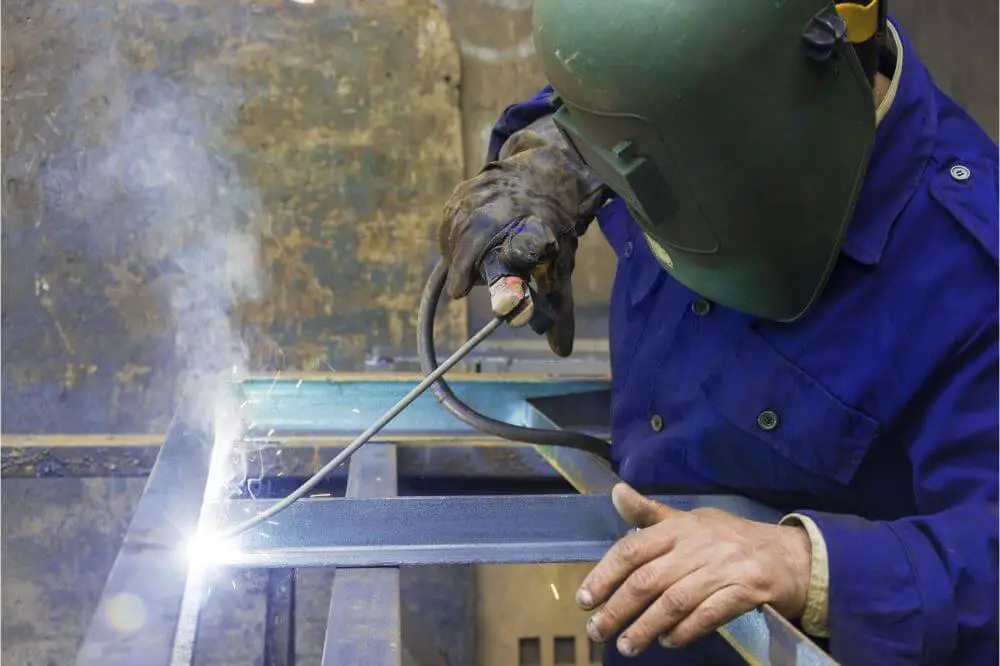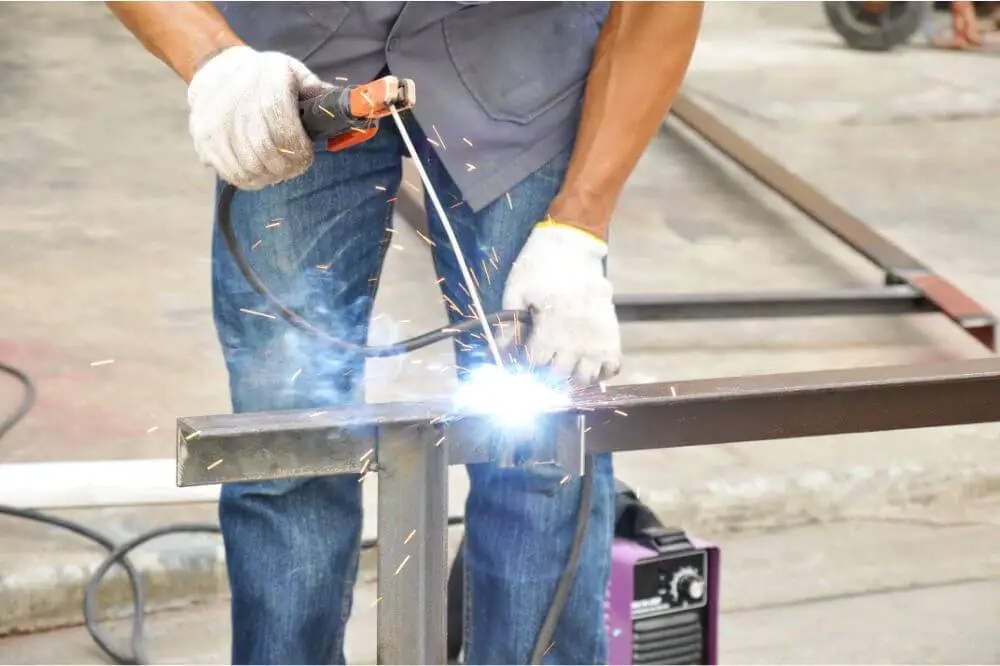Two very popular and common types of welding are stick welding and MIG welding. MIG welding involves the use of a spool of wire which is fed through the welder.
There is an electrode that creates a hot arc, that then melts the wire and the base metals together, thus forming a strong bond. MIG welding involves the use of shielding gas.
On the other hand, there is stick welding, which involves using a metal stick. Using an electrode, an arc is formed between the stick and the base metals, which bonds them together.
Both of these types of welding have their advantages and disadvantages, so let’s figure out which one is best for you.
Forming the Arc
One of the biggest differences between stick welding and MIG welding is how the arc is formed, and this has to do with ease of use.
On one hand, in stick welding, the user must keep the metal stick and the base metals at a certain distance from one another.
This is necessary to strike and maintain the arc that will melt and join the metals together. This is perhaps the hardest part of stick welding, and it is something that can take months to master.
On the other hand, MIG welding is much easier in this sense because the spool of wire is held in place at a certain distance from the electrode, and this means that MIG welding is more or less a point and shoot process.
Striking and maintaining the arc to join the metals takes very limited skill. Therefore, when it comes to forming the arc, MIG welding is much easier.
The Issue of Gas
What is important to know is that MIG welding involves using shielding gases. These gases help minimize or eliminate the exposure of the melding pool to the gases present in our environment, such as oxygen and nitrogen. This is not the case with stick welding, which does not use gas.
The issue is that MIG welders don’t all use the same gas. There are 4 main gases used in MIG welding – argon, helium, CO2, and oxygen, and sometimes a mixture of several of them.
Therefore, you need to find the right gas or gas combination for the job, and this will depend on the type of metal being welded, as well as the size of the welding nozzle.
Because stick welding does not require any shielding gases, in this sense it is easier.
However, most would agree that the issue of choosing the right gas is a much smaller problem than learning how to form a good arc with a stick welder.

Slag and Cleanup
The next aspect when it comes to the difference between MIG and stick welding has to do with slag and cleanup.
When you weld, there will usually be a bit of spatter – small liquid metal drops that spray outwards from the weld.
With MIG welding, spatter is more or less nonexistent, but with stick welding, you often get a lot of spatter. The result is slag, which is then cooled and dried metal droplets.
In other words, stick welding can create quite the mess, and the slag will need to be scraped off. This is not a problem you will have to deal with when it comes to MIG welding.
Precision Work
Something else that needs to be said is that MIG welding is ideal for precision work. You can weld very small and thin pieces of metal together with MIG welding.
It even gets to the point where MIG welding allows you to make some intricate and beautiful welding patterns.
This is not something that you can do with a stick welder. Stick welds are much bigger and chunkier, and they don’t look as nice.
They are not ideal for precision work, and welding anything less than ½ inch thick can be very challenging, if not downright impossible.
Changing Metals
The final thing to consider is that with MIG welders, you can have a lot of wire on a spool and you don’t have to change it much.
On the other hand, stick welding will involve frequent stick changes, and this interrupts the welding process.
Conclusion
The bottom line is that while stick welding does have certain advantages, especially when it comes to thicker materials, it is much harder to learn and execute than MIG welding.

